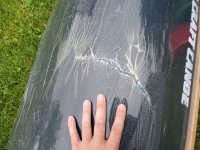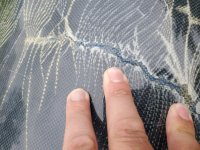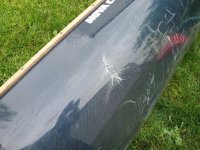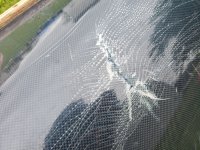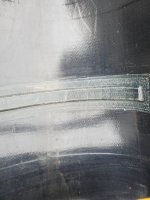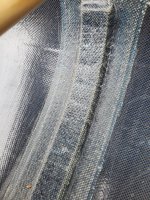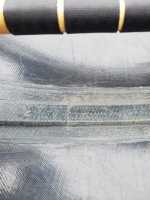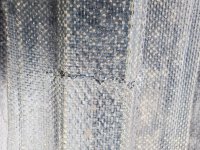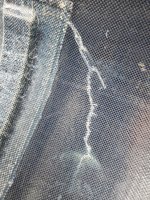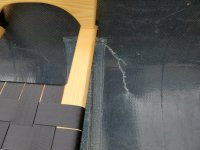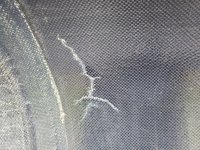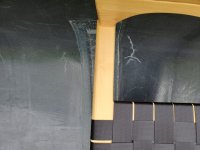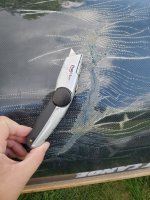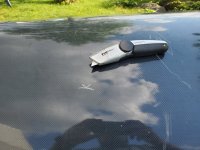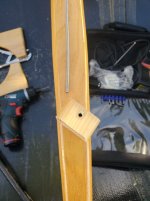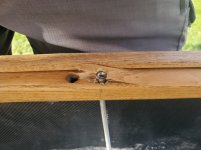Like @Alan Gage said, Epoxy sticks to pretty much anything except Polyethylene. It's also easily available in smaller quantities if you don't already have vinyl ester resin around.@sailsman63 @Alan Gage @memaquay
If you were to add a full piece of cloth to the inside of the hull, aside from any patching, would you use s-glass or aramid? What weight? Would it be worth using epoxy over vinylester?
I also would use basic 6oz E-glass. Don't see a reason to spring for the S-glass in this context.
Also would probably use 2-3 layers, but unlike Alan, I would put the smaller layers on first. Probably start with an 8" by whatever it takes to go about 3" past the ends of the big ouch, then 16" by and maybe finally 24" by on top of that. Definitely peel-ply, or as I never tire of advocating, check local fabric stores and get a couple yards of their cheapest, junkiest lightweight polyester satin. (suit jacket lining)
I would do this interior structural patch before messing with trying to fill in the cracking/working on the outside of the hull. If there are any loose bits/hanging by a thread, pick them out before laying the patch. Maybe lay some thin cardboard (cereal box) on the outside to keep the existing hull segments aligned and fair. Once the interior patch is cured, you can fill in any voids and maybe do an exterior layer for abrasion resistance and a fair surface. Also peel-ply, whether or not you add a cloth layer here.

